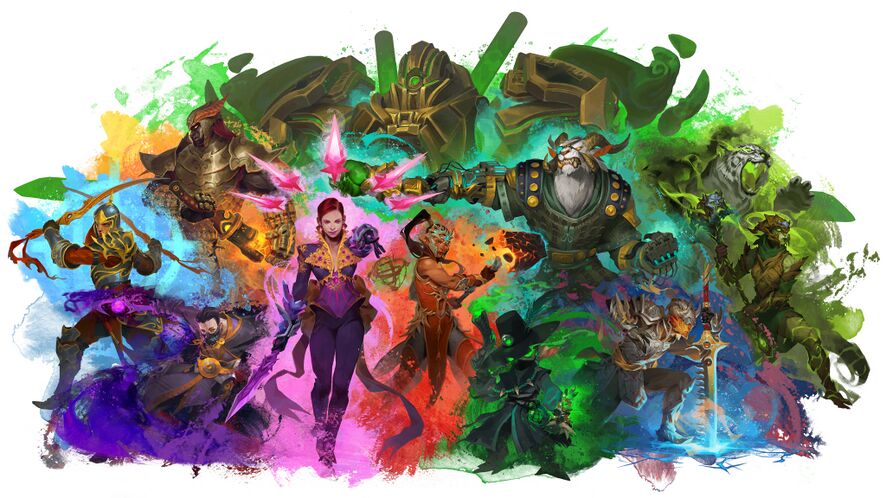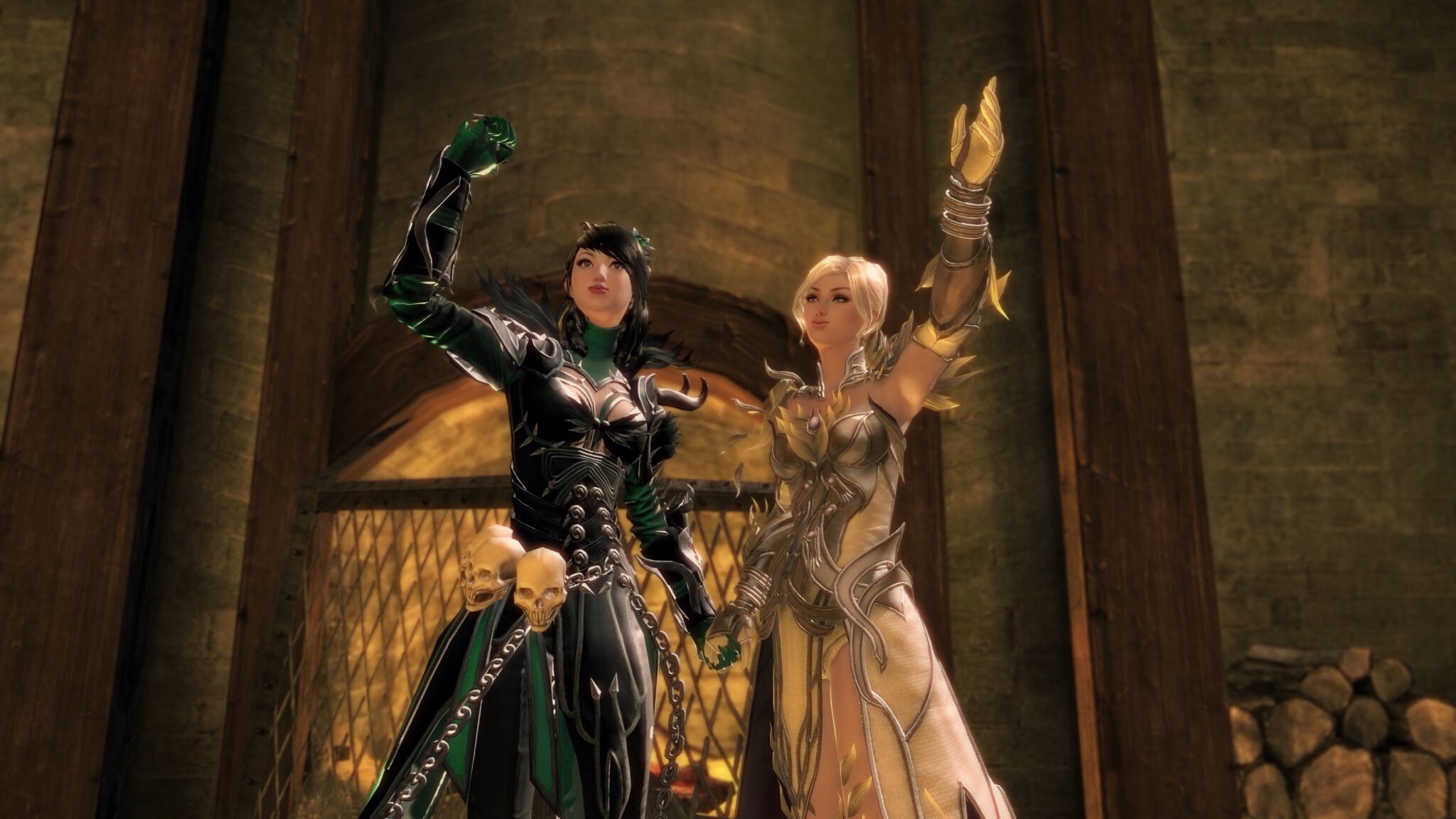
Queerness is not a checkbox in Guild Wars 2
As a queer child, I remember struggling to find video games accurately representing me. The mid-2000s were filled with games focusing on white male heroes battling the forces of evil while saving the damsel in distress. As a young trans woman, I ached for a game which played out the transcoded fanfiction I wrote about Faramir in Lord of the Rings. Of course, I knew that The Battle for Middle of Earth II was not strictly canon. Still, I liked to think that every time I recruited Faramir and her (yes, “her”, Faramir is trans and you cannot tell me otherwise) powerful longbow, I played out an absurd queer fantasy of the heroine turning the tide of battle.
As I’ve grown older, I’ve watched the games industry slowly allow queer representation to trickle in through games like Celeste or Life Is Strange: True Colours. However, it has also become increasingly apparent that AAA games have lagged, especially those in a pseudo-medieval fantasy setting. We often blame angry gamers who get up in arms about diversity for this exclusion, but I think it is symptomatic of a long-standing problem within the broader fantasy genre. The genre has always been gatekept by angry white men who want the cisheteronormativity of their fragile worlds to remain intact.
Despite this, ArenaNet’s Guild Wars 2 (GW2) is a glittering beacon for queer inclusivity within an MMORPG. ArenaNet’s contemporaries do very little to make their worlds queer-inclusive. Take Square Enix’s Final Fantasy 14 (FFXIV). FFXIV is a binary-gendered imperialist product which continues the long history of JRPGs actively avoiding including queer characters. There is plenty of queer coding, such as Emet-Slech being played as a sassy gay man, but there is no explicit queer representation. This is incredibly surprising given that nearly every queer gamer I know has played FFXIV at some point.
Blizzard is no better. The Shadowlands update introduced Pelagos, a transmasculine individual, to World of Warcraft (WOW) with one slight problem: Pelagos had to die to receive the affirmation and love he always craved. It was a poorly executed attempt at diversity as far as representation goes.
Blizzard’s problems also extend to their developer team’s lack of commitment to including queer characters. In a 2020 interview with Eurogamer, executive producer John Hight said that WoW does not emphasise sexual relationships; therefore, they don’t try to include references to queer identity in the game. The same sentiment extends to gender identity. They don’t want to make a big deal of it and would rather focus on making the game accessible – as if including references to queer identity would make the game inaccessible. There is magic and several species of humanoids, but explicit queer identity is the one thing that Blizzard cannot include.
GW2 subverts this trend by actively building an inclusive environment for its player base. There are numerous LGBTQIA+ guilds across each server which provide a welcoming, safe space for queer players – this isn’t much different to the community organising seen in other MMOs. However, AreaNet actively works to make those guilds feel included in the world. For example, ArenaNet actively endorses the annual Tyria Pride Parade – a Pride Parade organised by several queer guilds within the game’s virtual world. Last year, the Tyria Pride Parade raised close to $6000 for Rainbow Railroad – a charity that helps LGBTQIA+ people escape persecution and violence.
It is clear that the ArenaNet team actively supports queer rights. Their rebranding with the rainbow colours over Pride month doesn’t feel like an attempt at corporate pinkwashing, but rather an active restatement of their commitment to support marginalised communities.

The world-building and game design prove that the dev team’s affirmations about queer identity are not hollow, empty words. GW2 is set in a world where queerness is accepted. Numerous queer NPCs are shown to be madly in love with partners.
Furthermore, the Sylvari, a species of plant-like humanoids, are canonically pansexual. They are attracted to people who inspire them, regardless of their gender. As a species, the Sylvari are largely genderless and, sue to some spooky plant magic, they don’t need to reproduce as they quite literally sprout from a gigantic tree called the Pale Tree. Then there are characters from the original main story of GW2, Caithe and Fallin, who were previously in a same-sex relationship with one another.
The most prominent example of queerness in GW2 is the relationship between Kasmeer Meade, an adventurer-turned-diplomat, and Marjory Delaqua, a gritty detective. Their relationship starts awkward and tender, with its budding moments cemented by a huge dramatic moment in Living World Season 1, the first season of GW2, with regular story updates outside of the expansions. The plot beats which characterise their relationship give the same attention to detail that many heterosexual couples tend to be given. It was groundbreaking in 2013-2014 to see a lesbian couple be given so much screentime in an MMORPG.
A moment that truly shines between them is when Kasmeer thinks Marjory has died at the hands of Scarlett Briar (the villain of Living Story Season 1). The scene is tense as Kasmeer is enraged by the possibility that the love of her life might be dead and launches into fierce combat with Scarlett.
Upon defeating Scarlet, we get this huge dramatic kiss scene after she realises Marjory is still alive. This cements their budding relationship, which continues to grow throughout the story of GW2. Finally, with the End of Dragons expansion, the story concludes with the couple getting engaged.
Some have criticised this relationship for falling into the trope of exploiting lesbian relationships for the male gaze. However, the writing of their characters does not rely on hypersexualisation but rather focuses on them developing together and taking on new roles within the story. As a result, this criticism often feels like a way to shoehorn in complaints about how GW2 forces the relationships on players.
The forums contain a lot of references to how the best queer characters are the ones that don’t tell players that they are queer. In other words, cishet players don’t want to see marginalised groups represented in their video games -s if cishet characters don’t proudly profess their love for their partners. Every time a lesbian couple says I love you in a video game, a horde of gamers yells about how the dialogue isn’t natural and that politics must stay out of video games. It’s a neverending cycle of whining.

However, there are valid critiques of GW2’s queer representation. Like its contemporaries – GW2 doesn’t do the greatest job of including transgender characters. There is a handful of them, but they’re mostly background NPCs who rarely interact with the story in a major way.
Before the release of End of Dragons, one of the only trans characters was an NPC called Aid Work Sya. The obvious problem with her character is that she does not play a significant role in the story. She’s a background NPC with which you do not have to interact with. However, ArenaNet has stepped up its game about trans representation in the past three years. For instance, Jormag, one of the Elder Dragons, the villain in The Icebrood Saga, is canonically non-binary. Additionally, in the same story update, ArenaNet introduced a Myrun Skialkin – a non-binary NPC who can be found wandering the map.
End of Dragons introduced an explosion of transgender representation. The new expansion updated descriptions of masters craftspeople to be genderneutral. The in-game description was previously “master craftman”. The most prominent example is Yao – an ingenious genderqueer engineer who practically keeps the lights on in New Kaineny City – the capital of the Canthan region. They exist alongside several other nondescript non-binary NPCs
Despite this, the trans characters still feel sidelined and two dimensional. There’s no life or vibrance to their characters beyond Yao loving cats. However, with the next Living World update being set in Cantha, we can only hope for the development of Yao’s character.
GW2 may feel like the spunky underdog in the MMO RPG genre, but it excels in making the world of Tyria inclusive. The games industry is still slow to adequately represent queer identity with the numerous games, including queer characters, for the sake of a diversity checkbox, but GW2 makes you fall in love with their queer characters. GW2 is miles ahead of its contemporaries regarding queer representation. Queerness should not be a checkbox, and GW2 explicitly recognises this.







